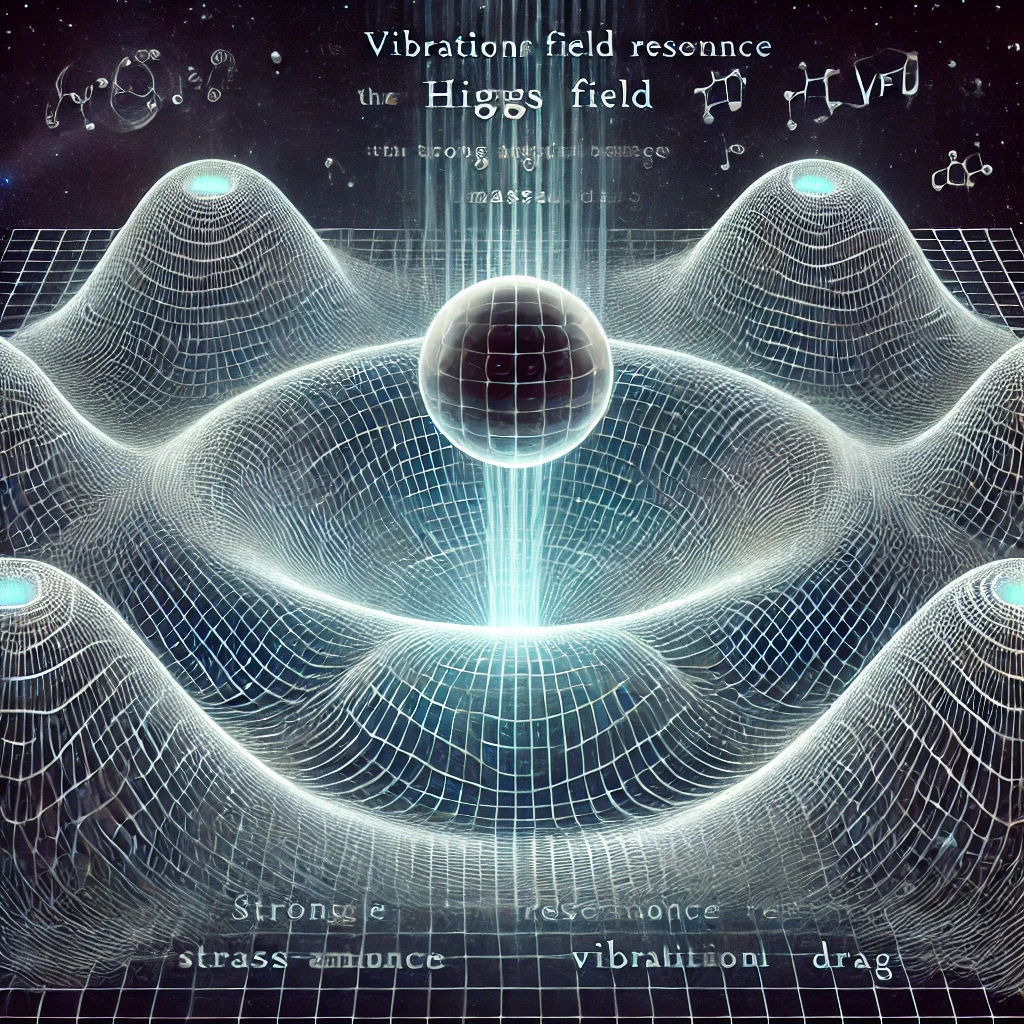Understanding Mass and the Higgs Field Through Vibrational Resonance

In Vibrational Field Dynamics (VFD), the Higgs boson and Higgs field are reinterpreted as expressions of vibrational alignment within the universal field. Instead of viewing the Higgs boson as an isolated particle that interacts with a separate field, VFD sees the Higgs as a specific vibrational resonance pattern that creates “mass stability” in particles. Here, we’ll explore how the Higgs field imparts mass in VFD, examining mass, resonance, and the vibrational alignment that brings particles into stable existence.
Mass as Resonant Stability within the Vibrational Field
In traditional physics, the Higgs field interacts with particles to give them mass, with the Higgs boson as a particle manifestation of this field. In VFD, mass is understood as a resonant stability within the field. Particles that align with specific vibrational patterns achieve resonance, creating a stable, mass-like quality. The Higgs boson represents a peak in this vibrational resonance, where the mass-stabilizing effect is maximized.
Analogy: Think of a drumhead where, when struck at the right point, it vibrates in a way that stabilizes the entire surface and produces a strong, defined note. The Higgs boson in VFD terms is like this specific point of vibrational stability, creating a resonance that gives particles a stable presence, or “mass.”
The Higgs Field as a Mass-Giving Alignment
The Higgs field is traditionally viewed as a field permeating space, interacting with particles to impart mass. VFD reinterprets the Higgs field as a mass-giving alignment within the vibrational field. When particles align with this specific frequency range in the field, they achieve resonance, which provides a stabilizing effect that we interpret as mass.
Analogy: Imagine tuning forks resonating to a particular frequency, causing them to vibrate more strongly. Particles in VFD gain mass by aligning with a “mass-giving” resonance in the field, similar to how tuning forks amplify sound when in tune.
Higgs Boson as a Moment of Vibrational Symmetry
The Higgs boson, in VFD, can be understood as a temporary peak of vibrational symmetry, where the mass-stabilizing effect of the Higgs field is maximized, making it observable. Instead of an independent particle, the Higgs boson is a particle-like manifestation of the field’s resonance at a point of vibrational coherence.
Analogy: Imagine a wave cresting on the shore, where the peak of the wave is a visible “moment” formed by the entire water flow. In VFD, the Higgs boson is like this wave crest—a localized event where the mass-giving resonance in the field reaches maximum coherence.
Mass Acquisition as a Vibrational Drag Effect
In VFD, particles that align with the Higgs resonance experience a vibrational drag effect, which imparts inertia and creates mass. This interaction doesn’t “add” mass to particles in the traditional sense; instead, it creates a drag due to the alignment of the particle with the field. This drag effect resists changes in motion, which we interpret as mass.
Analogy: Imagine moving your hand through thick water. The resistance you feel isn’t a property of your hand, but of the water surrounding it. Similarly, in VFD, mass arises from the interaction between particles and the vibrational field, creating a stabilizing “drag” effect that we perceive as mass.
Summary: The Higgs Boson and Mass in VFD
In the Vibrational Field Dynamics framework, the Higgs boson and Higgs field are understood as vibrational configurations within the field that stabilize particles through resonance, creating the effect we perceive as mass:
- Mass as Resonance: Mass is the result of stable resonance within the vibrational field, where particles align with a mass-giving frequency.
- Higgs Field as Mass-Giving Alignment: The Higgs field is a specific vibrational alignment within the field that grants resonance, stabilizing particles with what we perceive as mass.
- Higgs Boson as Symmetry Peak: The Higgs boson is a temporary peak of resonance where the field’s mass-giving effect becomes particle-like and observable.
- Mass Acquisition as Vibrational Drag: Particles experience vibrational drag when aligned with the Higgs resonance, creating resistance (inertia) that manifests as mass.
In VFD, the Higgs mechanism is reimagined as a natural outcome of vibrational resonance, making mass an effect of stability and alignment within the vibrational field. This perspective offers a new understanding of mass and inertia as inherent qualities of the universe’s vibrational structure.



Leave a Reply